What do a licorice-flavored liqueur, a potent anti-viral and a natural fabric dye have in common? Care to venture a guess? No? Well the answer is they’re all derived from Elderberries. The very versatile Sambucus, a genus of large, flowering shrubs, has many other uses as well, not the least of which is its ornamental value.
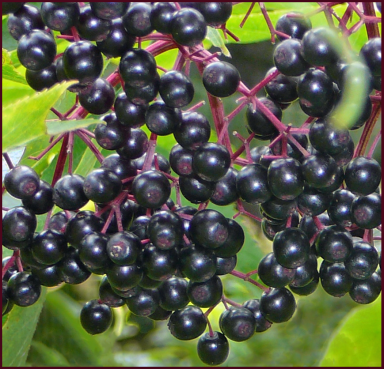
Sambucus nigra berries. Photo: Sue Gaviller
The berries are also used in jams, jellies and wine, the flowers are used in cosmetics, the hollow stems can be fashioned into musical instruments, and the dried leaves can be used as an insecticide. All parts of the plant, including the stems, bark, leaves and roots, are poisonous. The berries too, are reputed to have some toxicity to humans – if eaten raw. When cooked however, the toxins break down making the berries quite edible.
The real value to the horticulturist and the garden designer though, is ornamental. In our zone 3 climate, there are three species of Sambucus commonly used in the landscape: S. nigra (European black elder), S. canadensis (American elder), and S. racemosa (red elder). All have mid-green, compound leaves of medium to medium-coarse texture. Delicate white flower clusters appear in early summer, developing into very showy fruit later in the season – particularly the red-berried S. racemosa. In addition, the mature bark is quite interesting; reddish-brown with distinct vertical stripes.
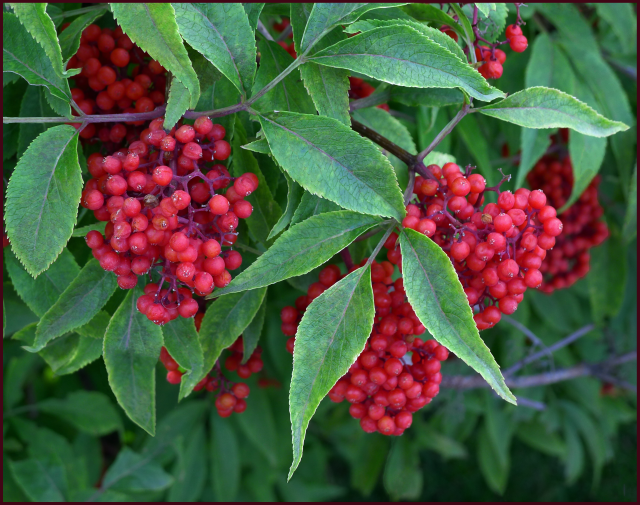
Sambucus racemosa berries. Photo: Sue Gaviller

Mature Sambucus bark. Photo: Sue Gaviller
Of greater note is the number of cultivars that have been developed from these three species – bred for colourful foliage, unique leaf texture, and flower colour.
More Colourful Foliage
In addition to the basic green of the species, gold, purple and variegated foliage colours are also available. One of the earlier gold-leaf introductions was Sambucus canadensis ‘Aurea’, a very intense yellow-green selection – hardy and robust. Numerous other golden cultivars are also available: S. racemosa ‘Sutherland Gold’, S. racemosa ‘Plumosa Aurea’ and S. racemosa ‘Goldenlocks’ to name a few.
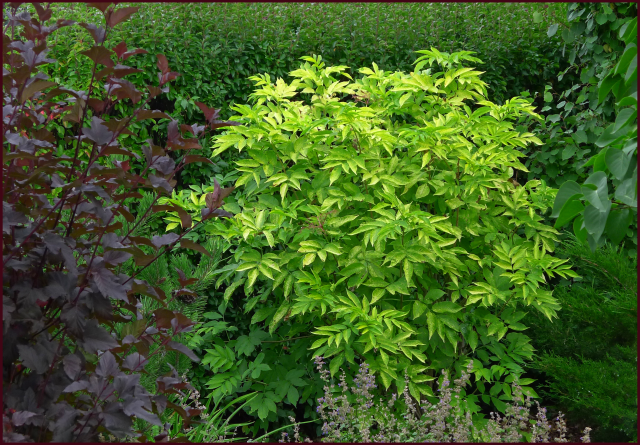
Sambucus canadensis ‘Aurea’. Photo: Sue Gaviller
There are also variegated cultivars, though I see fewer of them at local nurseries – in my own experience they are less reliably hardy, which may explain their inconsistent availability. Sambucus nigra ‘Madonna’ is usually available, and relatively hardy in our prairie climate – winter dieback can be a problem but re-growth is quite significant during the season. This cultivar has beautiful butter-yellow/green variegation on new leaves, turning to creamy white and green as they mature.
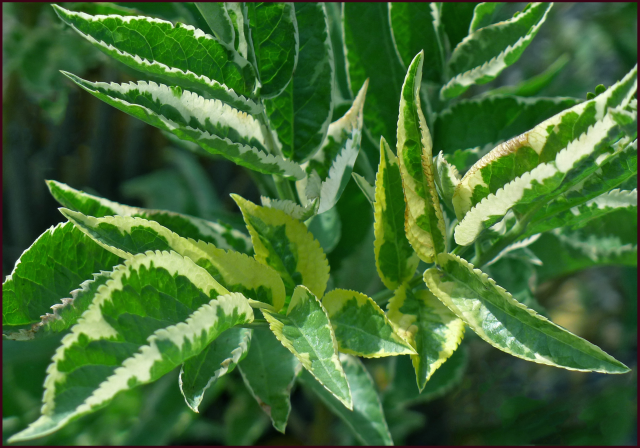
Sambucus nigra ‘Madonna’. Photo: Sue Gaviller
The original Purple variety, S. nigra ‘Purpurea’, had foliage that emerged purple but faded to bronze-green as the season progressed. This was followed by the almost identical ‘Guincho Purple’, which didn’t hold its colour very well either. The real breakthrough in purple foliage occurred with the introduction of ‘Black Beauty’, bred to maintain its dark, rich purple colour throughout the season. Indeed it does, and it’s also a very vigorous grower – especially widthwise, so give it some elbow room (unless you don’t mind pruning constantly). Most intense colour is achieved in full sun, with somewhat less saturated colour in shadier locations.

Sambucus nigra ‘Black Beauty’. Photo: Sue Gaviller
More Textural Interest
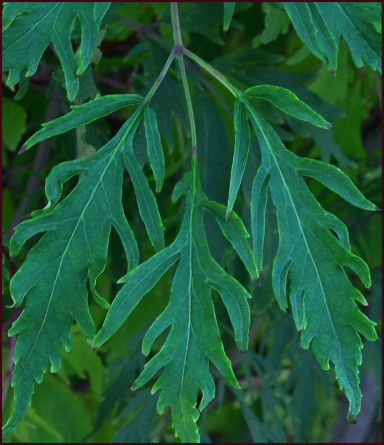
Sambucus nigra ‘Laciniata’. Photo: Sue Gaviller
Many Sambucus cultivars also exhibit fine lacy-looking texture. While all elders have compound leaves (which in itself provides textural interest), the cut-leaf selections have finely dissected individual leaflets, providing very unique textural appeal.
Sambucus nigra ‘Laciniata’, a green variety, was the earliest of these lace-leaf elders, but breeders went on to select for this characteristic in coloured cultivars as well.
![]()
The aforementioned gold cultivars, S. racemosa ‘Sutherand Gold’, S. racemosa ‘Plumosa Aurea’ and S. racemosa ‘Goldenlocks’ are fine examples of both bright colour and lacy texture. Another is the recent dark leaf introduction, S. nigra ‘Black Lace’.
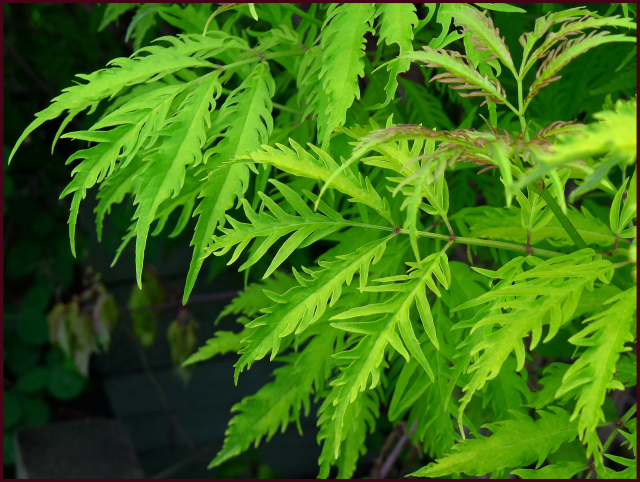
Sambucus racemosa ‘Sutherland Gold’. Photo: Sue Gaviller
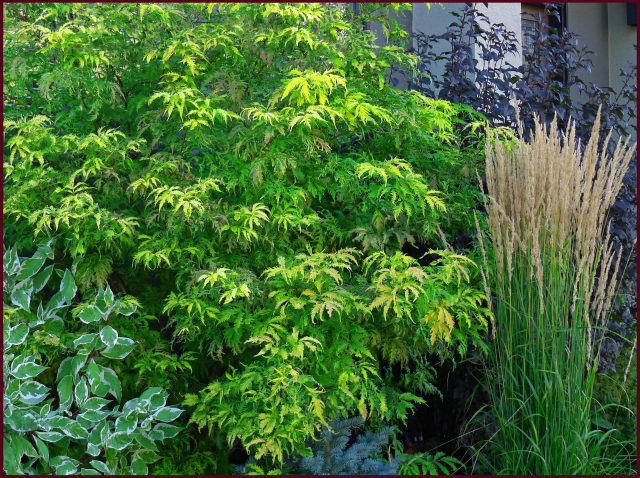
Sambucus racemosa ‘Plumosa Aurea’. Photo: Sue Gaviller
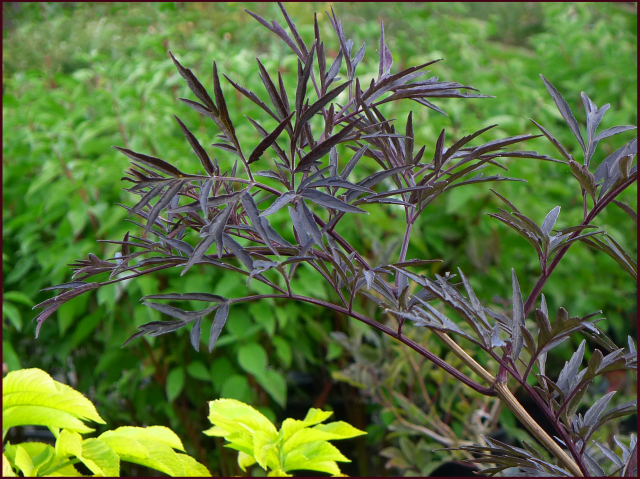
Sambucus nigra ‘Black Lace’. Photo: Sue Gaviller
More Flower Power
As if beautiful foliage colour and texture weren’t enough, a few of these lovelies also have stunning flower colour. While most elders produce the characteristic creamy white panicles, S. nigra ‘Black Lace’ and S. nigra ‘Black Beauty’ have exquisite pink flowers – a striking contrast to the dark foliage.
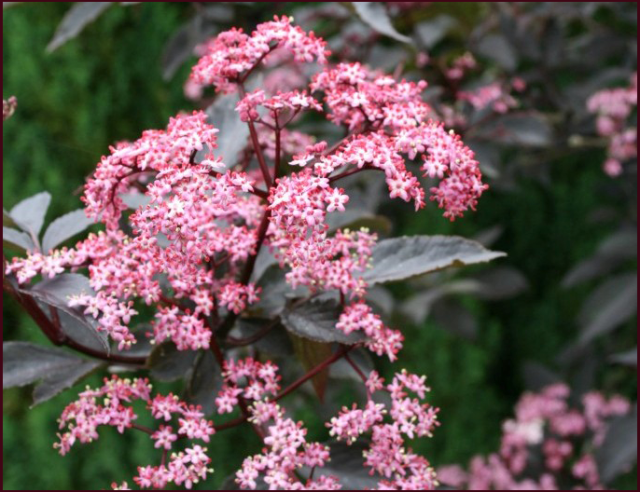
Sambucus nigra ‘Black Beauty’. Photo: Alison Pike, Alison’s Garden

Sambucus nigra ‘Black Lace’. Photo: Amanda Slater
More than Just a Pretty Face
The horticultural importance of Sambucus species goes beyond their design value. Their roots are deep and very dense so they’re useful for stabilizing slopes and controlling erosion – even along stream banks. To top it all off they provide food and cover for many birds – hummingbirds especially enjoy the nectar from the flowers.
So my gardening friends, show a little respect – your elders have much to offer.
Respectfully yours, Sue